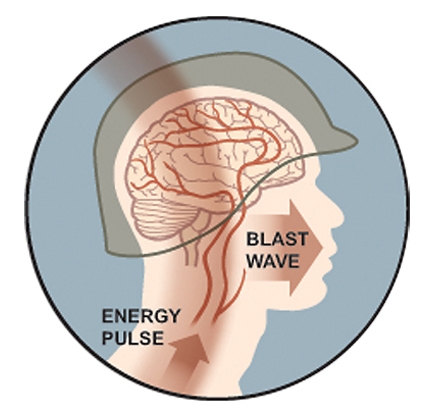You have probably encountered concussions in your practice with patients who have been in automobile crashes or taken a hit on the football field. Military service members certainly can receive concussions by these same mechanisms.
But the most common cause of concussion/mTBI among service members who deployed to Iraq and Afghanistan is a blast from an improvised explosive device (IED). A blast can result in a TBI even when the head does not collide with an object. Blast can affect the entire body, injuring limbs, eyes, and ears, for example.
Blast injuries are divided into four classes:
- Primary blast injuries are caused by the blast's shock wave traveling through the body.
- Secondary blast injuries are caused by shrapnel and other flying debris hitting the body.
- Tertiary blast injuries occur when the service member is accelerated into a solid object such as the ground or the interior of a vehicle.
- Quaternary injuries include crush injuries, burns, and inhalation of smoke or noxious gases.
Watch this slideshow on blast injuries to the brain:

The Mechanics of Blast Injury
"Since 2006, blasts have been the most common cause of injury among American soldiers treated at Walter Reed Army Hospital…"
